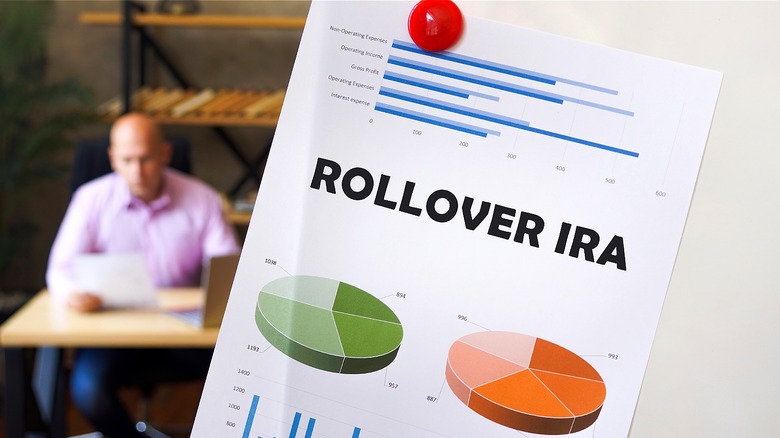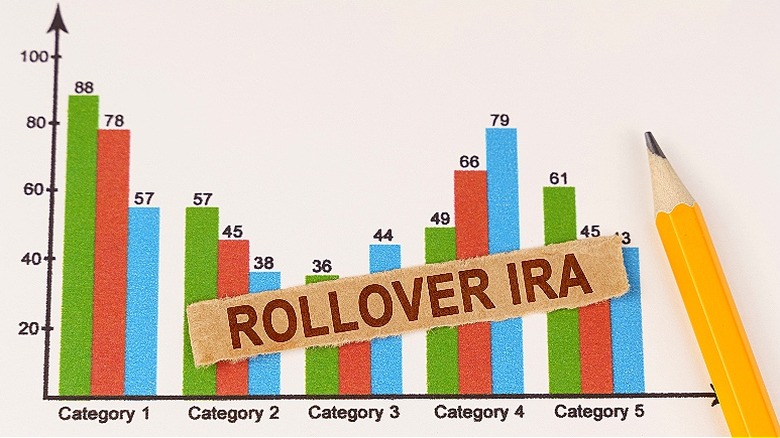How Does A Rollover IRA Work?
Retirement saving isn't always crystal clear. With plenty of account types, contribution limits and regulations, as well as perks to consider, it's often difficult to work out the best path forward. Any given account option can be either a stellar means of funding your unique future, or an inefficient approach that limits your mobility. Take IRA account options, as just one example. A Roth IRA is a tax-forward retirement funding selection that shifts the tax burden into the present. Alternatively, a traditional IRA can be leveraged to reduce your tax burden today (introducing a deduction to your adjusted gross income) and is funded with pre-tax dollars.
The primary reason for considering a rollover IRA is to transition funds from an employer- sponsored 401(k) to your own IRA holdings. For those with an existing IRA (Roth or traditional), moving funds with the help of a rollover is fairly simple. There's only one extra step for a rollover if you don't currently use one, selecting an option and opening an IRA. If done with a bit of planning, you won't typically find yourself owing a large tax bill and can utilize these rollover funds in your IRA reservoir without incident.
First, choose the IRA type you'll be using
As noted, the type of IRA is immensely important when thinking about retirement planning. One solution (traditional IRA) pushes your tax burden into retirement, aimed at levying an income tax threshold on your withdrawals that's lower than you'd face today (based on your salary figure today versus withdrawal plans later). The other (Roth IRA) looks to use after-tax dollars to create tax-free growth over the long-running span of your life, taking advantage of compound interest investment options and creating a lifestyle in retirement that doesn't feature a heavy consideration around tax implications.
Either individual retirement account type can be a great option, and it's important to consider which one better serves your needs today and in the future. Another key piece of the puzzle is the decision to rollover funds in the first place. When you leave a job, you could opt to keep your 401(k) as is. You may have utilized the employer-match benefits (here's the real reason why companies offer it) to increase your total contributions substantially. In a fund that's managed well and offers a diverse set of investment asset choices, leaving the funds alone might be a good choice.
This said, managing your own retirement funds is often more beneficial. You will likely find a home for your portfolio that doesn't charge any fees, and making moves yourself in a richer environment of assets opens your options up tremendously. (On that note, this common 401(k) rollover mistake will cost you [not making it clear it's a rollover and not a contribution]).
Go with the less-complicated direct rollover option
IRA rollovers can be done as direct or indirect exchanges. An indirect rollover will see your 401(k) administrator send you a check personally. You then have 60 days to deposit the funds into an IRA. When performing a rollover this way, the outlet managing your 401(k) will withhold 20% to account for potential tax implications, which are then refunded later on if you complete the IRA funding process within the allotted time. You might consider keeping some of the funds, which counts as an early withdrawal and may come with increased tax implications and penalties.
A direct rollover, meanwhile, is far less complicated, and requires less of you personally as well. Instead of managing the transfer yourself, you leave the task to your financial institutions (ironically, taking an indirect role in the process of a "direct rollover"). Funds are moved directly from your old 401(k) to the nominated IRA account, and you won't touch them at all, eliminating any pathway for the transfer to be considered a withdrawal (a common 401(k) rollover mistake that will cost you).
This is likely going to be a faster option, too, since only one transfer must take place to get your funds moved to the target account. There's no limit to the amount you can rollover, either, so you won't have to worry about the potential for a contribution that reaches over your limit ($7,000 for individuals under age 50 in 2024). The reality is that a rollover IRA gives you personal access to retirement funds that you own but hadn't been under your control previously. It's a great way to introduce new mobility to your retirement planning and isn't all that difficult to accomplish.


